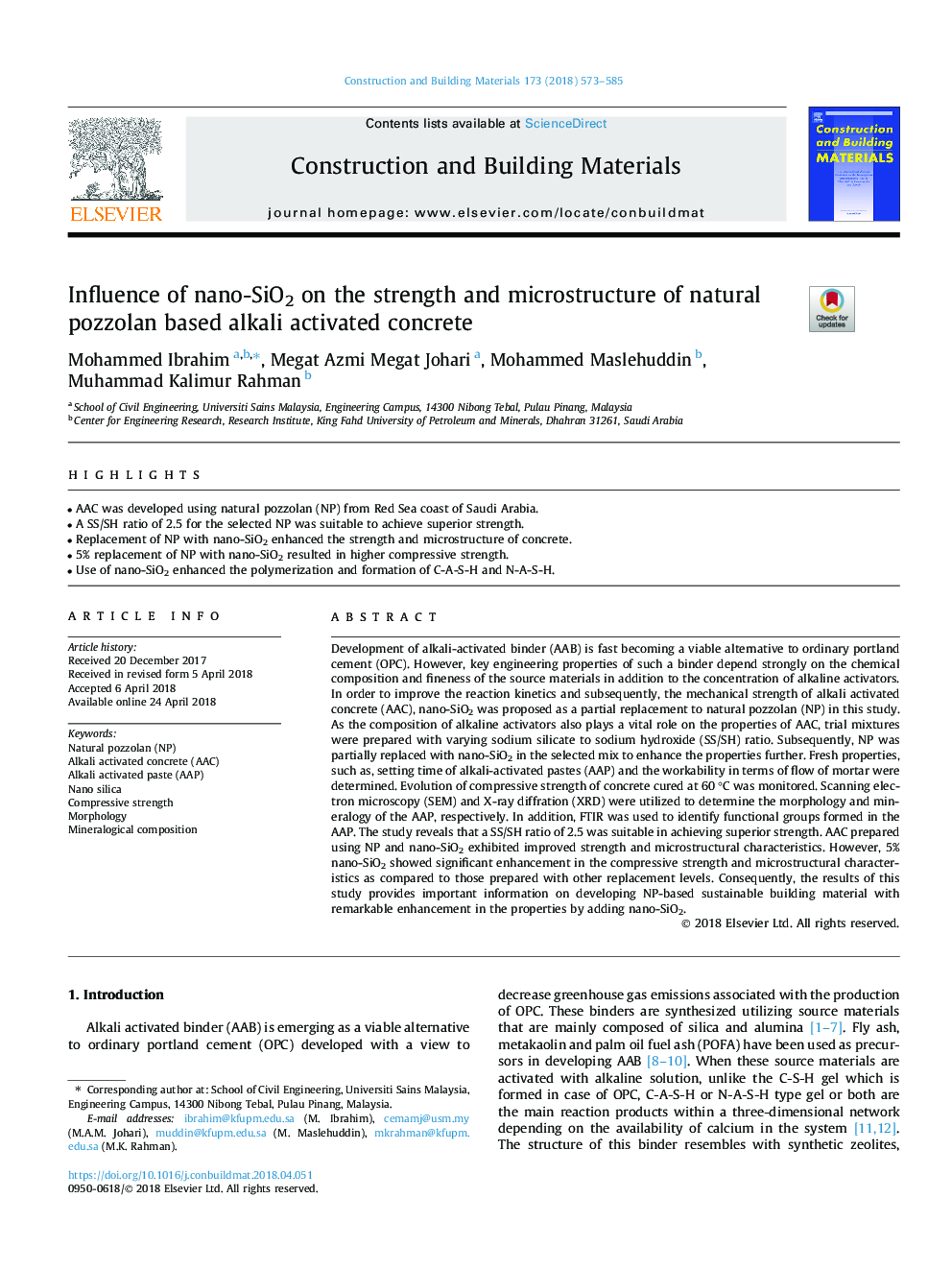| Article ID | Journal | Published Year | Pages | File Type |
|---|---|---|---|---|
| 6713791 | Construction and Building Materials | 2018 | 13 Pages |
Abstract
Development of alkali-activated binder (AAB) is fast becoming a viable alternative to ordinary portland cement (OPC). However, key engineering properties of such a binder depend strongly on the chemical composition and fineness of the source materials in addition to the concentration of alkaline activators. In order to improve the reaction kinetics and subsequently, the mechanical strength of alkali activated concrete (AAC), nano-SiO2 was proposed as a partial replacement to natural pozzolan (NP) in this study. As the composition of alkaline activators also plays a vital role on the properties of AAC, trial mixtures were prepared with varying sodium silicate to sodium hydroxide (SS/SH) ratio. Subsequently, NP was partially replaced with nano-SiO2 in the selected mix to enhance the properties further. Fresh properties, such as, setting time of alkali-activated pastes (AAP) and the workability in terms of flow of mortar were determined. Evolution of compressive strength of concrete cured at 60â¯Â°C was monitored. Scanning electron microscopy (SEM) and X-ray diffration (XRD) were utilized to determine the morphology and mineralogy of the AAP, respectively. In addition, FTIR was used to identify functional groups formed in the AAP. The study reveals that a SS/SH ratio of 2.5 was suitable in achieving superior strength. AAC prepared using NP and nano-SiO2 exhibited improved strength and microstructural characteristics. However, 5% nano-SiO2 showed significant enhancement in the compressive strength and microstructural characteristics as compared to those prepared with other replacement levels. Consequently, the results of this study provides important information on developing NP-based sustainable building material with remarkable enhancement in the properties by adding nano-SiO2.
Related Topics
Physical Sciences and Engineering
Engineering
Civil and Structural Engineering
Authors
Mohammed Ibrahim, Megat Azmi Megat Johari, Mohammed Maslehuddin, Muhammad Kalimur Rahman,
